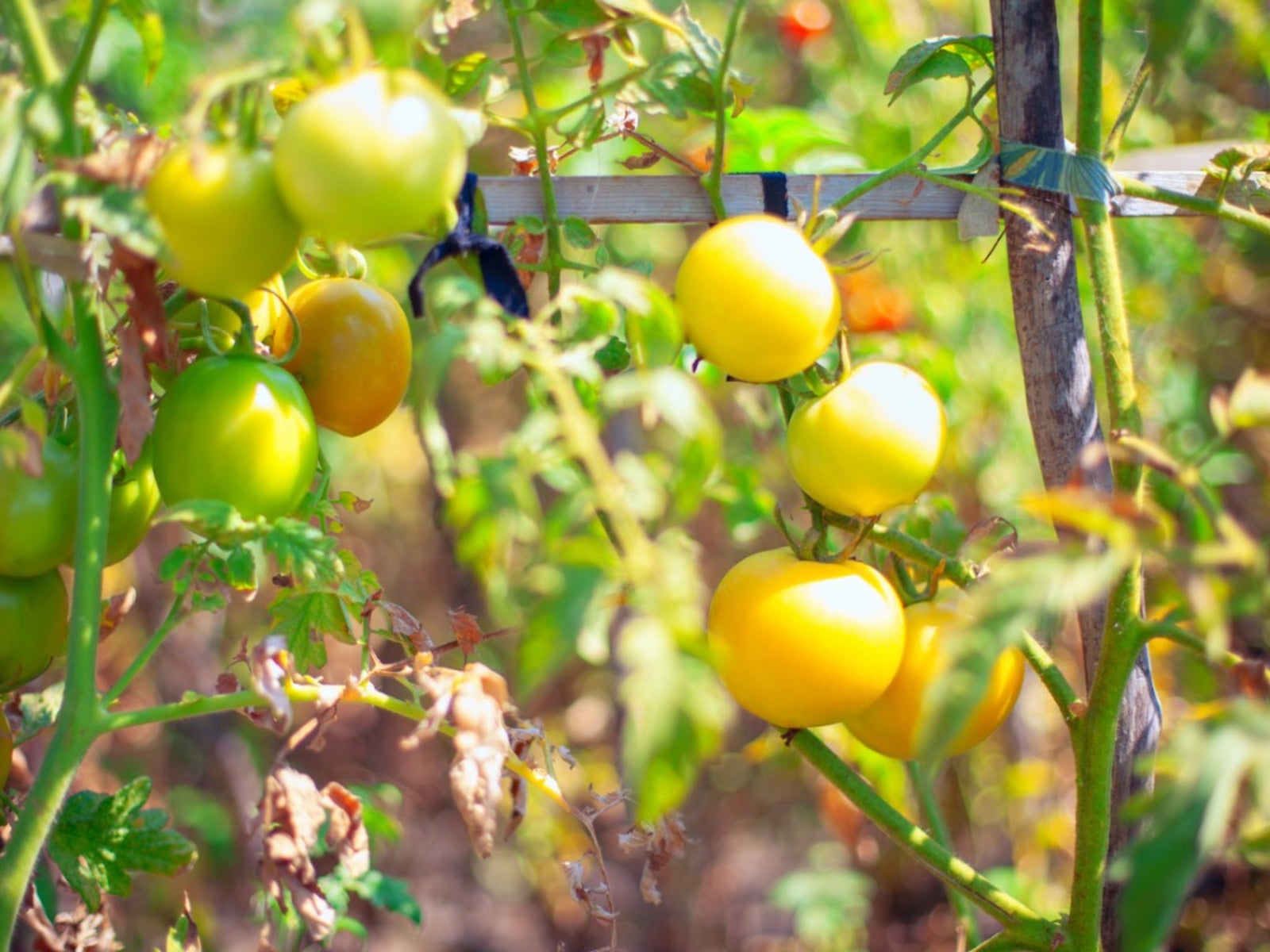Tomato Plant Ripening: Can You Slow Down The Ripening Of Tomatoes?

Living in the Pacific Northwest as I do, we almost never encounter the problem of how to slow ripening tomatoes. We are more likely to be praying for any tomatoes at all, well into August! I realize that not everyone lives in such a cool and wet climate, however, and that slowing down tomato ripening may be of paramount importance in hotter regions.
Tomato Plant Ripening
Ethylene gas is responsible for the tomato plant ripening process. This process begins with ethylene gas being produced inside the tomato once it has attained full size and is pale green. Once tomatoes turn about half green and half pink, called the breaker stage, cells form across the stem, sealing it off from the main vine. At this breaker stage, tomato plant ripening may occur either on or off the stem with no loss of flavor.
Can You Slow Down the Ripening of Tomatoes?
If you live in a region prone to very hot summers, it might be beneficial to know how to slow ripening tomatoes in order to extend your tomato crop harvest. Temperatures over 95 degrees F. (35 C.) will not allow tomatoes to form their red pigments. While they will rapidly ripen, even too rapidly, they end up a yellowish orange hue. So, can you slow down the ripening of tomatoes? Yes, indeed. While tomatoes don't ripen at fridge temps, if they are harvested at the breaker stage, storing them in a cool area no less than 50 degrees F. (10 C.) will begin the process for slowing down tomato ripening.
How to Slow Ripening Tomatoes
To extend your tomato crop harvest, remove the fruit from the vine when it is at the breaker stage, remove the stems, and wash the tomatoes with water-- drying in single layers on clean towels. Here, the options expand on slowing down tomato ripening. Some people simply place the tomatoes one to two layer deep in a covered box for ripening while others individually wrap the fruit in brown paper or a sheet of newspaper and then place in the box. Paper wrapping reduces the buildup of ethylene gas, which is responsible for tomato plant ripening, thereby slowing down tomato ripening. Either way, store the box in an area that is no less than 55 degrees F. (13 C.) and in a place of low humidity, such as the basement or a cool garage. Any lower than 55 degrees F. (13 C.), and the tomatoes will have a bland flavor. Tomatoes stored in temperatures of between 65 and 70 degrees F. (18-21 C.) will ripen within two weeks and those stored at 55 degrees F. (13 C.) in three to four weeks. Humidity is a huge factor when storing the tomatoes, as they will shrivel if too low and mold if it is too high. For high humidity regions, try placing the tomatoes in a strainer over a pan of water. You can also try to extend your tomato crop harvest by removing the entire tomato vine and hanging it upside down to gradually ripen in a dark, cool basement or garage. Allow the fruit to ripen naturally, checking frequently and removing the tomatoes that are fully ripened as they will give off ethylene gas and speed the overall ripening of the case of tomatoes. If you wish to speed up the ripening process for just a few tomatoes, you can increase the temperature by moving them to an area up to 85 degrees F. (29 C.) or place a ripe tomato or banana (containing high amounts of ethylene gas) in the container with the tomatoes to hasten ripening. Keeping them warm up to a maximum 85 degrees F. (29 C.) will rapidly bring full ripeness. Once ripe, they can keep for several weeks in the refrigerator.
Gardening tips, videos, info and more delivered right to your inbox!
Sign up for the Gardening Know How newsletter today and receive a free copy of our e-book "How to Grow Delicious Tomatoes".

Amy Grant has been gardening for 30 years and writing for 15. A professional chef and caterer, Amy's area of expertise is culinary gardening.
-
 Which Invasive Shrubs Should You Avoid Growing? Plus, Best Natives To Plant Instead
Which Invasive Shrubs Should You Avoid Growing? Plus, Best Natives To Plant InsteadCertain plants may look lovely but they can wreak havoc to local areas and native wildlife. Here are the key invasive shrubs to avoid – with recommendations on gorgeous native alternatives to try
-
 What Not To Plant With Tomatoes: 8 Bad Neighbors That Could Ruin Your Harvest
What Not To Plant With Tomatoes: 8 Bad Neighbors That Could Ruin Your HarvestNot all companion plants are beneficial – some can sabotage your tomatoes. Find out which ones to keep at a safe distance in the garden.